livelihoods
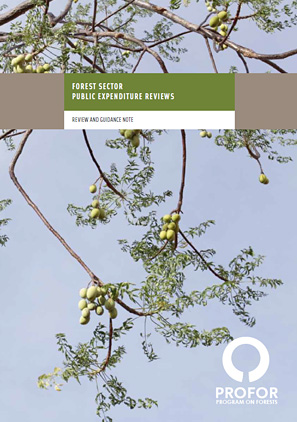
Share
Related Links
Forest Sector Public Expenditure Reviews: Review and Guidance Note
Benchmarking Public Service Delivery at the Forest Fringes in Jharkand (India)
Reforming Forest Fiscal Systems
Attachments
Forest-Sector-PER-review-PROFOR.pdf
Authors/Partners
Martin Fowler with Patrick Abbot, Stephen Akroyd, John Channon, Samantha Dodd (Oxford Policy Management and LTS International).
Forest Sector Public Expenditure Reviews (Toolkit)
Evaluating the effectiveness of public spending in the forestry sector: lessons from global good practices
CHALLENGE
Public expenditures in the forest sector arise from the need to maximize development outcomes and enhance livelihoods, conserve a variety of local and global public goods, set an attractive investment climate to leverage private investment, and contribute to the costs of forest administration. Yet the sector is typically poorly funded in most developing countries.
Lack of adequately qualified staff, lack of funds to carry out essential supervisory operations and lack of equipment are symptoms of ineffective budget planning and allocation. Poorly paid staff have few incentives to execute their duties responsibly and may be tempted to indulge in corrupt and illegal practices. In the end, mismanaged forests compromise development and environmental goals.
APPROACH
Sectoral public expenditure reviews can help diagnose spending problems and help countries develop more effective and transparent budget allocations that promote growth and reduce poverty.
To ensure that sectoral reviews are based on effective tools (tracking surveys, citizen report cards, etc) and translate into successful policy and spending reforms, PROFOR commissioned a stock-taking of public expenditure reviews in the forests sector. The authors examined global best practice examples from other sectors and made recommendations based on this analysis.
The guidance note covers the issues to be considered during the preparation phase of a forests sector PER, and in drawing up the Terms of Reference (an example ToR is provided), the analysis that should be contained within the report, and a proposed structure for the report.
FINDINGS
The review finds that, globally, very few forest sector PERs have been undertaken to date. Of the 61 PERs reviewed, only 14 focused to any degree on forestry. Of these, 11 were part of an FAO programme of sustainable forest development, where the principal focus was on aspects of forest revenue, with only limited analysis of sector expenditures.
The principal findings of the review of PER literature are as follows:
- The definition of ‘forestry’ and the ‘forest sector’ differs considerably between studies.
- There are considerable inconsistencies between policy priorities and planned budget allocations to the forest sector.
- Data problems were a common feature of the PERs.
- In almost all of the cases reviewed, only a small proportion of the national budget is allocated to the forest sector.
- Many of the PERs reveal low disbursement rates against approved budgets.
- The importance of NGO expenditure and involvement in the forests sector is understated.
- Capital investments are undertaken without consideration of the associated recurrent spending requirements to adequately maintain these investments.
- Operations and maintenance (O&M) funding in forestry departments is inadequate.
- Few attempts have been made in the PERs reviewed to link public sector expenditure to outcomes.
- There is limited analysis of the efficiency and effectiveness of forestry expenditures.
RESULTS
PROFOR and Oxford Policy Management hosted a half-day workshop on December 14, 2010, in Washington DC. The objective of the workshop was to present the initial findings from the Forest PER survey, to discuss some of the best practices which have emerged from this review, and to seek wider feedback about the utility of the draft guidance note, and how it can be made more useful to sectoral practitioners. The review and guidance note were finalized in January 2011 and published formally in July 2011.
In a second phase, individual countries will customise the guidelines to meet their specific requirements and experiences with piloting the guidelines will be used to revise the guidance note.
For stories and updates on related activities, follow us on twitter and facebook , or subscribe to our mailing list for regular updates.
Author : Martin Fowler with Patrick Abbot, Stephen Akroyd, John Channon, Samantha Dodd (Oxford Policy Management and LTS International).
Last Updated : 06-16-2024
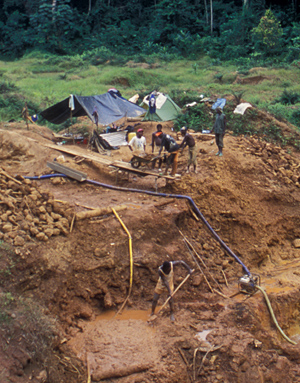
Share
Related Links
Artisanal and Small Scale Mining: A Summary (PDF- 24 pages May 2013)
ASM-PACE Global Solutions Study
Liberia Case Study (June 2012)
ASM-PACE Methodological Toolkit (June 2012)
Field Notes: Green gold for Gabon (Nov. 2012)
Record Gold Prices Drive Deforestation in Peruvian Amazon
Attachments
ASM_PACE-GlobalSolutions_1.pdf
Authors/Partners
WWF, Fauna and Flora International, and Estelle Levin Ltd, for the World Bank Africa Region.
Impact of Artisanal and Small Scale Mining in Protected Areas
CHALLENGE
Artisanal and small scale mining (ASM) is an important source of income for millions of poor people around the world. The past decade has seen increasing numbers of individuals and households turn to ASM, and this trend is likely to grow in the face of high mineral prices, population growth, poverty and climate change. Because ASM activities contribute to poverty reduction in remote rural areas, efforts to simply eradicate the activity tend to fail.
However ASM tends to destroy and degrade forest ecosystems (through habitat destruction, the use of toxic chemicals, pollution of waterways, etc) and threatens the practices on which mining populations depend (for example, gathering firewood, bushmeat hunting, timbering for construction, etc). It is also a growing driver for internal migration and colonization of frontier forest lands that may lead to permanent land clearance.
APPROACH
With PROFOR support, the World Bank's Africa regional staff contracted WWF and Estelle Levin Ltd to conduct studies in Liberia and Gabon to analyze the impacts of artisanal mining activities on high-value natural landscapes and the people who live nearby. Drawing lessons from the assessment of two national parks (Ndangui in Gabon and Sapo National Park in Liberia) and existing literature on succesful park management, the case studies, the global solutions study and the methodolgical toolkit offer recommendations on how to reconcile socio-economic development based on artisanal mining and preservation of important ecological sites.
MAIN FINDINGS
The study looked at 36 countries and found that artisanal and small scale mining was taking place either inside or along the borders of 96 out of 147 protected areas in those countries. In the end, the project looked in more depth at experiences in three countries: Liberia, Gabon and Madagascar (case study is forthcoming) -- see videoclip for findings.
It concluded that military efforts to permanently remove illegal miners from protected areas were not sustainable in the long run (particularly if a source of minerals is well known), and that other solutions could help breach a compromise between conservation goals and mining activities:
- For example, there are potential opportunities to develop sustainable mining through a sustainable supply chain approach, notably in Gabon where miners do not use mercury to extract gold.
- Short of eviction, co-existence and degazetting parts of protected areas are also options that allow negotiated access to mineral resources.
- Although replacing artisanal and small scale mining with large-scale operations may be attractive from a government regulation point of view, they do not offer the same number of jobs that smaller operations do.
The Methodological Toolkit has been designed to help users:
1.Rapidly assess and map environmental, social and economic impacts of Artisanal and Small-scale Mining,with a particular focus on protected areas, critical ecosystems and vulnerable groups.
2.Identify potential solutions and alternative approaches through assessment of past efforts (both successes and failures) to address the identified short- and long-term environmental impacts.
3.Identify and develop measures that can produce concrete improvements in critical ecosystems through sustainable solutions that reduce the environmental and social damage caused by ASM, while building on its economic, social, and empowerment potential.
For stories and updates on related activities, follow us on twitter and facebook , or subscribe to our mailing list for regular updates.
Author : WWF, Fauna and Flora International, and Estelle Levin Ltd, for the World Bank Africa Region.
Last Updated : 06-16-2024
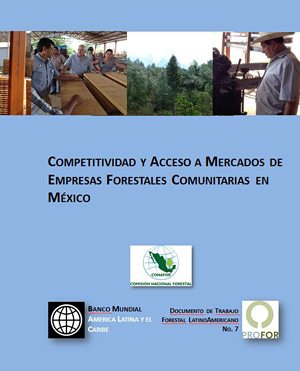
Share
Related Links
Competitividad y Acceso a Mercados de Empresas Forestales Comunitarias en Mxico (junio 2013 PDF)
Strengthening the Value Chain for Indigenous and Community Forestry Operations
Attachments
Guia_para_la_evaluacion_economica_y_financiera_de_proyectos_forestales_comunitarios_en_mexico_1.pdf
MX PROFOR- Competitiveness Report_1.pdf
Authors/Partners
World Bank Latin America and Caribbean Region, CONAFOR, Frederick W. Cubbage, Robert R. Davis, Gregory E. Frey and Diji Chandrasekharan-Behr
Community Forestry Enterprise Competitiveness and Access to Markets in Mexico
CHALLENGE
About one-third of Mexico’s land area is covered by biodiversity-rich native forests, two-thirds of which are considered to have commercial potential. Despite the biological riches and commercial potential, almost 55% of forest-dependent communities are extremely poor. Particular to Mexico, some 80% of forests are owned by indigenous and other communities, giving forest land ownership a strong social nature. Yet Mexico’s forest resources are far from meeting their potential for alleviating poverty and contributing to local development and the national economy. While the Government of Mexico is extremely concerned about conserving the nation’s forest resources and using them sustainably, the forest sector policies and programs do not fully reflect the unique tenure structure of the forests.
Meanwhile, in the last 25 years, numerous Mexican forest communities have managed to develop reasonably successful, commercial community forestry enterprises based on timber and non-timber products. Some of these are among the world’s most advanced examples of commercial community forestry. The large majority of forest communities, however, run less-advanced forest businesses.
APPROACH
While much analysis has been done in the last few years on the economics of community forestry in Mexico and its potential to be competitive, most of this work has been done in isolation from critical stakeholders and has fallen short of generating coherent dialogue and the consensus required to reorient public policy in support of CFEs.
In order to help inform Mexico’s forestry priorities, internal policies, and programs in support of community forestry competitiveness, this activity aimed to develop consensus (through a stakeholder-driven process) on the key constraints and policy actions required to position Mexico’s community forestry sector as a high-value provider to niche markets from sustainably managed community forests, delivering both income and biodiversity protection.
In a two-phased approach, the project would first:
- create a stakeholder participation framework and develop ownership among key stakeholders on the process, outputs and outcomes
- integrate external partners into the process and synthesize their work in this area
- carry out diagnostics and analysis needed to agree upon the priority products and value chains, and
- characterize the current policy and incentive framework of the community forestry sector.
Next the activity would conduct the in-depth analysis needed to develop specific policy, incentive, and public expenditure recommendations to the Government of Mexico and the National Forestry Commission (CONAFOR) to enhance the competitiveness of community forestry.
RESULTS
- Guidelines for financial and economic evaluations for community forestry (Spanish and English versions).
- Training material for financial and economic evaluations for community forestry (Spanish).
- Non-market valuation of forest goods and services: Training presentation (Spanish)
- Toolkit for data capture for community forestry for financial and economic evaluations including: (i) data capture guidelines (Spanish); (ii) data processing spreadsheet (Spanish), and (iii) data capture survey (short and longer version in Spanish)
- Capacity building services to CONAFOR and private and public stakeholders provided to date are: (i) Stakeholder workshop (Nov. 2010); (ii) Stakeholder workshop (July 2011). Data collection training (Mar 2012).
- Financial analysis of 30 selected representative community forest enterprises -- now available in Spanish. The survey touched on topics such as: land equivalent values, profitability of CFEs, forest management, harvesting, sawmills, economic incentives, payments for environmental services, etc.
For stories and updates on related activities, follow us on twitter and facebook , or subscribe to our mailing list for regular updates.
Author : World Bank Latin America and Caribbean Region, CONAFOR, Frederick W. Cubbage, Robert R. Davis, Gregory E. Frey and Diji Chandrasekharan-Behr
Last Updated : 06-16-2024

Share
Related Links
Supporting Small and Medium Forest Enterprises -- A Facilitator's Toolkit (April 2012)
Appuyer les petites entreprises forestieres: Bote outils du facilitateur (PDF)
Apoyo a las pequeas empresas forestales: Herramientas del facilitador (PDF)
Testing and enriching guidance modules (Workshop proceedings 2011)
Sourcebook: Small and Medium Forest Enterprises in Ghana (2012)
Attachments
Opportunities for climate-smart on-farm tree-based enterprises in Malawi.pdf
Small-Medium-Forests-Ghana_1.pdf
Forest connect second workshop report - final_1.pdf
Apoyo-pequenas-empresas-forestales-Espanol_1.pdf
Appuyer-les-petites-entreprises-forestieres-Francais_1.pdf
Authors/Partners
Forest Connect, FAO, IIED
Forest Connect: Supporting Small and Medium Forest Enterprises (toolkit)
CHALLENGE
Small and medium forest enterprises (SMFEs) are the norm in most developing countries. They often represent 80-90% of all forest enterprises and more than 50% of formal forest jobs -- plus many more of an informal and seasonal nature. They accrue wealth locally, empower local entrepreneurship, strengthen social networks and engender local social and environmental accountability.
But in least developed countries, structures that connect with and support SMFEs and their associations are weak. They face problems such as excessive bureaucracy, unstable policies or regulations biased toward large-scale operators, insecure tenure, inaccessible credit, poor market information, inadequate technology and advice, poor infrastructure, insufficient business know-how, etc. All too frequently, the result is social breakdown, economic failure and degradation of the forest resource on which SMFEs are based.
APPROACH
With PROFOR financing, IIED, FAO and other partners developed an approach to help increase the social, economic and environmental sustainability of SMFEs and their associations by connecting them to emerging markets, to service providers and to national forest programme (nfp) processes. The backbone of the "Forest Connect" project was based on ongoing work to support small forest enterprises in 6 partner countries (Burkina Faso, Ghana, Guatemala, Guyana, Mozambique and Nepal) plus linked work through separate PROFOR projects in India (through CEFI) and Central America (through the Rainforest Alliance). In addition, IIED and FAO separately support Forest Connect partners in China, Ethiopia, Lao PDR and Mali.
A second phase of the project, launched in 2010, aimed to test and enrich guidance modules for the facilitation of small and medium forest enterprises in Burkina Faso, Ghana, Guatemala, Guyana, Mozambique and Nepal.
RESULTS
An international networking website has been launched with material on small forest enterprise support, and has so far more than 400 members from 48 countries (http://forestconnect.ning.com). Bimonthly email newsletters from this website have helped to encourage feedback on a range of issues – including the most appropriate training materials for supporters of small forest enterprises.
An international workshop held in Edinburgh in July 2008 brought together Forest Connect members from 12 countries with a range of expert resource persons to begin to develop a demand-driven toolkit framework (see the workshop report here). A second one, held in Addis Abbaba in Ethiopia in February 2010, aimed to test and enrich the toolkit.
The final toolkit ("Supporting Small and Medium Forest Enterprises -- A facilitator's toolkit" available on this page) was published by IIED in April 2012. A sourcebook with information on small and medium forest enteprises in Ghana was also produced, as well as stories from the field explaining how groups have successfully linked to Forest Connect to undertake various activities.
For stories and updates on related activities, follow us on twitter and facebook , or subscribe to our mailing list for regular updates.
Author : Forest Connect, FAO, IIED
Last Updated : 06-16-2024
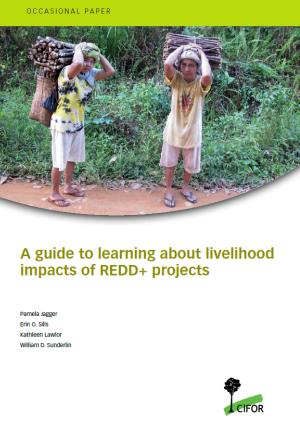
Share
Related Links
"Report: A Guide to Learning About REDD+ (Dec. 2010)
http://www.profor.info/knowledge/social-impact-assessment-forest-carbon-projects...
Attachments
Authors/Partners
Authors: Pamela Jagger, University of North Carolina at Chapel Hill, CIFOR; Erin O. Sills, North Carolina State University, CIFOR; Kathleen Lawlor, University of North Carolina at Chapel Hill; William D. Sunderlin, CIFOR. Partners: The work was supported by Norad, AusAID, DFID, the EU, Finland, the David and Lucile Packard Foundation, PROFOR, USAID and the US Department of Agriculture’s Forest Service.
Maximizing Learning from REDD+ Demonstration Activities (toolkit)
CHALLENGE
Lessons learned from the first generation of sub-national REDD ‘demonstration activities’ will shape the international REDD mechanism’s ability to promote policies and actions that are equitable, effective and efficient. Those lessons will also have a crucial impact on the design of the second generation of REDD strategies and activities. Yet harvesting credible, evidence-based lessons is not as straightforward as it seems.
APPROACH
This knowledge activity was carried out by CIFOR with financial support from PROFOR and other donors. It set out to ensure that first-generation REDD demonstration activities (part of the global process agreed in Bali) would draw on analysis and tools in their design and implementation which maximize learning about how to achieve effectiveness, efficiency and equitability.
RESULTS
This analysis became part of "A guide to learning about livelihood impacts of REDD+ projects" published by CIFOR in December 2010. The report examines the following:
- The case for learning from REDD+
- Counterfactual thinking for learning from REDD+ projects
- Understanding the causal mechanisms that link REDD+ interventions to outcomes
- Practical considerations for understanding the social welfare impacts of REDD+
- Moving ahead with realising REDD+: Guidance for learning about social impacts
The guide provides a unique and integrated method for evaluating the success of REDD+ at the project site level while recognizing that regional and international forces are at play in shaping local outcomes. The guide is accompanied by an executive summary and ten worksheets.
For stories and updates on related activities, follow us on twitter and facebook , or subscribe to our mailing list for regular updates.
Author : Authors: Pamela Jagger, University of North Carolina at Chapel Hill, CIFOR; Erin O. Sills, North Carolina State University, CIFOR; Kathleen Lawlor, University of North Carolina at Chapel Hill; William D. Sunderlin, CIFOR. Partners: The work was supported by Norad, AusAID, DFID, the EU, Finland, the David and Lucile Packard Foundation, PROFOR, USAID and the US Department of Agriculture’s Forest Service.
Last Updated : 06-16-2024
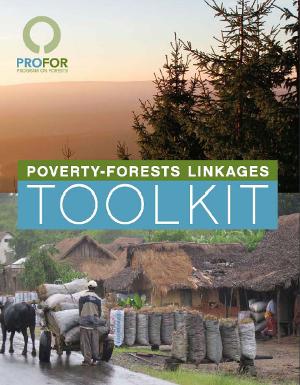
Share
Related Links
Attachments
Poverty-Forests-NepalCaseStudy_1.pdf
Forests-Poverty-CaseStudyLaoPDR_1.pdf
Authors/Partners
The toolkit had multiple authors including Gill Shepherd and Jill Blockhus. Experts from CIFOR, IUCN, ODI, PROFOR, Winrock International and the World Bank contributed to this work.
Poverty-Forests Linkages Toolkit
CHALLENGE
An estimated 1.2 billion people rely on forests for some part of their livelihoods. However, the importance of forests is often overlooked in national development processes such as poverty reduction strategies due to inadequate evidence documenting how forests sustain the poor.
| Poverty-Forests Linkages Toolkit by PROFOR (Program on Forests) is licensed under a Creative Commons Attribution-Noncommercial 3.0 United States License. Permissions beyond the scope of this license may be obtained by emailing profor@worldbank.org. |
APPROACH
To build better knowledge on this critical relationship, PROFOR developed a “Poverty-Forests Linkages Toolkit” to facilitate relevant data collection and analysis. The Toolkit was created in partnership with CIFOR, IUCN, ODI, and Winrock International, on the basis of case studies in Guinea, India, Indonesia, Lao PDR, Nepal, and Tanzania.
The first draft of the Toolkit was completed in April 2007, and was based on piloting and field testing in three different locations in Indonesian Papua (highlands, lowlands and a mangrove area) and in Tanzania. A consortium of national level organizations led by the International Institute for Economic Development and the Center for International Development and Training carried out further pilots of the Toolkit in four African countries - Cameroon, Ghana, Madagascar and Uganda.
TOOLKIT
What the Poverty-Forest Linkages Toolkit Includes
- A set of rapid appraisal methods to gather information on economic as well as other contributions from forests to households, especially the poor;
- Methods for analyzing field data for the potential role of forests in reducing poverty and vulnerability and policy options for improving the contribution of forests to rural livelihoods;
- Suggestions for how to frame the results so as to be relevant to the planners, government agencies and other institutions and organizations, at both local and national levels;
- An explanation of the PRSP process and identification of the strategies and skills needed for influencing the PRSP process (including potential entry points for forestry); and
- A Field Manual to support training and capacity building for local government forest officials, collection of information to understand forest dependence locally and hands-on application of participatory assessment tools
Field Tools and their Purpose
Tool 1 Wealth RankingPurpose: Understand how poor househoulds use and depend on forest resources | Tool 2 Local Landscape Situation AnalysisPurpose: Understand how villagers use local resources |
Tool 3 Timeline and TrendsPurpose: Record changes in forest resources agriculture, local livelihood strategies and income | Tool 4 Livelihoods AnalysisAim: Determine subsistence reliance on forests and the annual income from forests |
Tool 5 Forests Problem and Solution MatrixPurpose: Identify and rank forest problems and suggest solutions | Tool 6 Trees and Forest Products ImportancePurpose: Rank forest products by importance for cash or subsistence use |
Tool 7 Millennium Development Goals ChartPurpose: to show the contribution of forests to the achievement of the MDGs | Tool 8 Monetary ValuesPurpose: To express the contribution of forestry in monetary terms |
RESULTS
- After piloting was completed in 2008, PROFOR developed a field-compatible version of the toolkit and started providing training in its use. Over 50 World Bank staff and external participants were trained during the World Bank’s annual Sustainable Development Network Forum in March 2009. The toolkit was also disseminated at the XIII World Forestry Congress in October 2009. The training of a dozen National Forest Programme Facility coaches at FAO in February 2010 concluded PROFOR’s direct engagement with the toolkit and transferred product and skills to the NFP Facility for roll out in their country activities.
- IUCN has used the toolkit extensively in its Livelihoods and Landscapes Strategy program, which is active in 23 countries. Using the toolkit, IUCN has extracted new information on the importance of cash and non-cash forest income for forest-dependent people.
- New needs are also arising from the REDD+ process as countries struggle to understand the link between livelihoods and depdendence on forest resources.
For stories and updates on related activities, follow us on twitter and facebook , or subscribe to our mailing list for regular updates.
Author : The toolkit had multiple authors including Gill Shepherd and Jill Blockhus. Experts from CIFOR, IUCN, ODI, PROFOR, Winrock International and the World Bank contributed to this work.
Last Updated : 06-16-2024

Share
Related Links
A New Survey Tool Promises to Raise the Profile of Forests in National Development Agendas
Poverty-Forests Linkages Toolkit
Improving the Forests Database to Support Sustainable Forest Management
Launch of the sourcebook on national socioeconomic surveys in forestry
External Related Links
Seeing the forests and the trees
National socioeconomic surveys in forestry
Launching the sourcebook on national socioeconomic surveys in forestry
Socioeconomic Benefits of Forests
Authors/Partners
The World Bank, PROFOR, FAO
Building National-Scale Evidence on the Contribution of Forests to Household Welfare: A Forestry Module for Living Standards Measurement Surveys
CHALLENGE
Forests and trees in rural landscapes contribute to human wellbeing in a variety of ways. They provide a range of goods—from fruit to timber, fodder to firewood—and services such as pollination, hydrological regulation, and carbon sequestration that support the livelihoods of millions of people. Despite these contributions and growing recognition of the importance of landscape approaches, forests and trees often remain peripheral in wider development policy discussions. Part of the reason for this marginalization is that developing country decision-makers and planners lack the most basic information about the role and importance of the forestry sector to their national economies. Researchers, advocates, and policymakers alike increasingly recognize that a variety of assets and activities beyond agriculture underpin rural livelihoods, but the picture is incomplete in many circumstances without reliable national-scale data on the contribution of forests and trees.
Comparative research in a variety of developing country settings demonstrates the important contribution that forests can play in mitigating and reducing poverty (see, e.g., recent PROFOR and CIFOR studies). However, available evidence is primarily site-specific, and it is not clear whether results can be extrapolated to the national level. The absence of national-scale evidence on forests-poverty linkages impedes holistic understanding of the role forests can play in providing pathways out of poverty and the development of policies to achieve sustainable reductions in poverty and inequality. Lack of such data also limits capacity to establish adequate baselines, track changes over time, and assess the impact of forest-related investments on poverty.
APPROACH
This activity will help address this knowledge gap by developing a forestry module and sourcebook on its use in the context of the Living Standards Measurement Study (LSMS), LSMS-Integrated Surveys on Agriculture (LSMS-ISA) and other similar national survey instruments. The objective of this activity is to mainstream the collection of national scale data on the contribution of the forestry sector to household welfare by developing and disseminating the forestry module and sourcebook. In addition to PROFOR and LSMS, this activity is a collaboration of the FAO Forestry Department, the Poverty and Environment Network (PEN), coordinated by the Center for International Forestry Research (CIFOR), the International Forestry Resources and Institutions (IFRI) research network, and the University of Copenhagen.
RESULTS
The main output of this activity is the sourcebook ‘’National socioeconomic surveys in forestry: guidance and survey modules for measuring the multiple roles of forests in household welfare and livelihoods." Field-testing was successfully carried out in Tanzania (financed by PROFOR) and Indonesia (financed by CIFOR). Based on the results of these field tests, the module and sourcebook were revised and finalized. The outputs were disseminated at the World Forestry Congress (September 2015) and at the FAO during the International Conference on Agricultural Statistics (October 2016), targeting national statistical agencies, forestry departments, and related agencies.
The original goal of this activity was to mainstream the use of national-scale data on the contribution of forests to household welfare. This work has already contributed to numerous other activities, including on understanding forests’ contribution to poverty reduction; a national survey of about 2,000 households in Turkey as part of the World Bank's dialogue with the government on forest policy; and ongoing forest and poverty work in Armenia and Georgia. In addition, the LSMS-ISA continues pushing for the adoption of the forestry module in different countries, with support from PROFOR. Engagement has started with about 8 countries, with a target of having 3-5 countries using the tool by FY19. A shorter version of the forestry module is also being promoted, so that countries can undertake initial data inquiries to assess whether there is demonstrated need for rolling out the forestry module at the national level (For instance, this was carried out as part of the 2017 Household Budget Survey in Sao Tome and Principe.)
While data is still currently being collected, initial findings from the ongoing work in Liberia clearly illustrate the heavy reliance of households on forest and wild products. These findings are expected to raise a significant amount of interest amongst stakeholders. A BBL is planned to showcase the preliminary results and implementation experience. The findings from Armenia will equip decisionmakers with evidence on the linkages between forestry reliance, energy use, and poverty, thereby enabling improvements in both environmental and social outcomes via evidence-based policy design. Similarly, further promotion of a short forestry module, following lessons learned from the Sao Tome and Principe experience, could increase the geographic coverage and frequency of data on forestry usage leading to increased knowledge and evidence for policy-making.
While it is early in the process to articulate achievements in terms of influence on policies and investments, this activity has achieved the following:
- demonstrated proof of the application concept of the forestry module in the context of national-level LSMS survey applications;
- developed and acted upon the interest of counterparts in developing these applications in new countries;
- developed and applied a community-level module of the survey design to collect, among other forest-related data, gender-specific data;
- developed a CAPI application of the survey module, to be further developed for wider dissemination.
In 2019, PROFOR provided additional support to implement the modules in the following countries:
- Liberia, as part of the Liberia National Household Forestry Survey (NHFS) implemented by the Liberia Institute of Statistics and Geo-Information Services (LISGIS).
- Armenia. The activity team provided sampling and questionnaire design input for a survey on forestry, poverty, and energy.
- São Tomé and Príncipe. A subset of the forestry module was included in the 2017 Household Budget Survey, intended to provide preliminary data on forest dependency and gauge the potential for future inclusion of the full module.
- Turkey
- Georgia
For stories and updates on related activities, follow us on twitter and facebook , or subscribe to our mailing list for regular updates.
Author : The World Bank, PROFOR, FAO
Last Updated : 06-16-2024
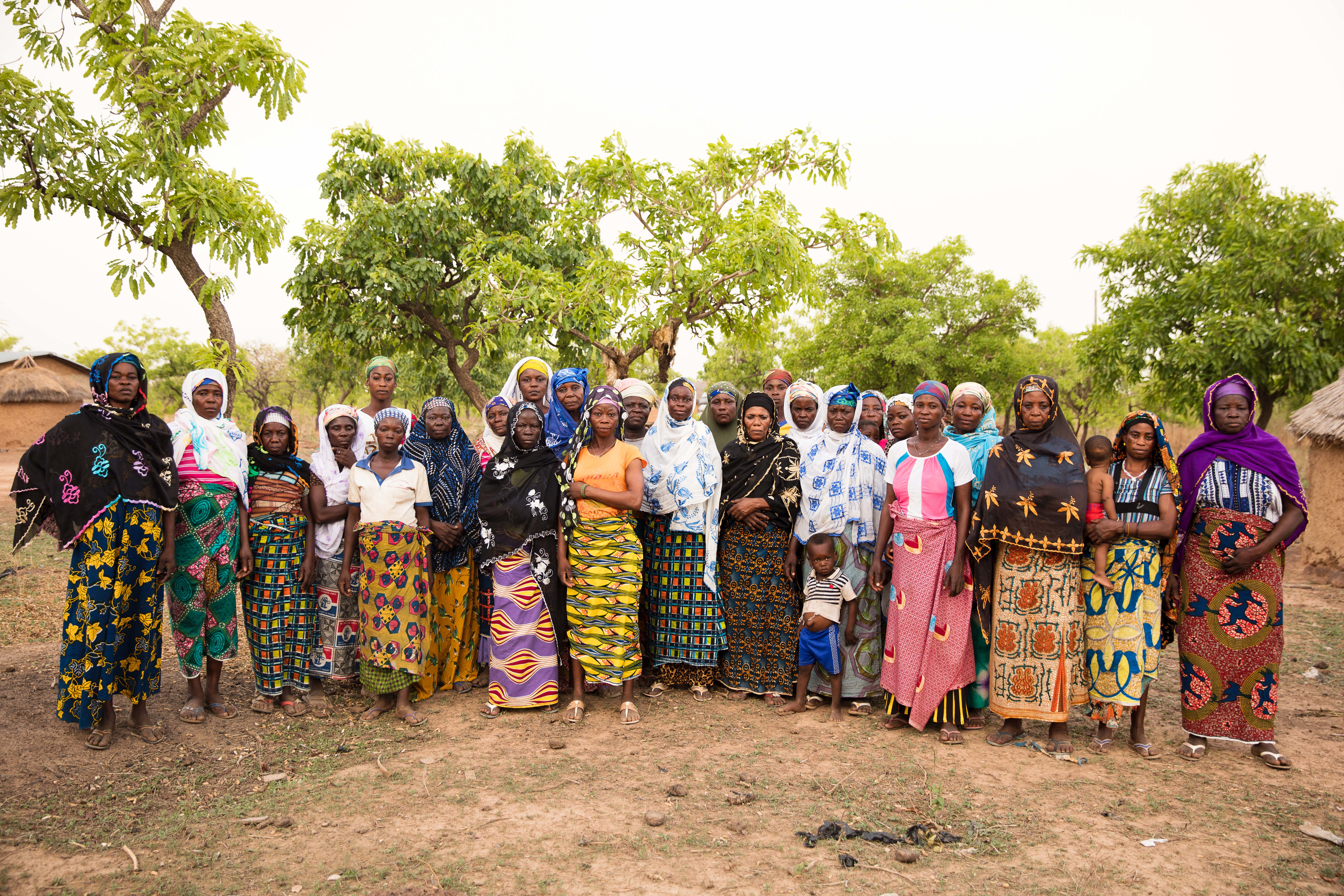
Food and forests: We can have them both
Agriculture provides most of the world’s food. It also contributes the most to global deforestation.![]() This does not mean, however, that we need to choose between feeding a rapidly growing population and protecting the forests that are so essential to our wellbeing.
This does not mean, however, that we need to choose between feeding a rapidly growing population and protecting the forests that are so essential to our wellbeing.
While many countries have first depleted their forests before seeing a rebound in tree cover, this “business-as-usual” scenario is not inevitable.![]() But changing it does require a paradigm shift. In part, it means redefining what “successful” pathways to sustainable development look like, so that they resonate with local leaders and reflect local realities – and thus gain political support. In addition, transitioning away from the status quo depends on forming new and creative partnerships between companies, communities, governments, and investors.
But changing it does require a paradigm shift. In part, it means redefining what “successful” pathways to sustainable development look like, so that they resonate with local leaders and reflect local realities – and thus gain political support. In addition, transitioning away from the status quo depends on forming new and creative partnerships between companies, communities, governments, and investors.
How to bring about this new food-and-forest paradigm? An ongoing study - funded by the Program on Forests (PROFOR) and led by the World Bank's Agriculture and Environment Global Practices along with experts from many agricultural and environmental organizations - is trying to find concrete answers. The team is focusing on six agricultural commodities: three that are heavily implicated in deforestation activities (palm oil, soy and beef), and three that could include planting trees in their cultivation (cocoa, coffee and shea butter). In an initial synthesis study, the researchers draw out some key lessons for removing deforestation from agricultural supply chains sooner rather than later, and for increasing the planting of trees in agricultural lands. Here are just six of their takeaways:
- Success starts with the farmer. There are many agricultural practices which, if implemented at scale, can benefit crop yields while slowing deforestation or increasing tree cover. Not only must farmers be fully equipped with this information, but they should be consulted and supported in making the transition to sustainable production systems.
- It is important to recognize and reward innovators. A system based entirely on punishing those who contribute to deforestation is unlikely to be effective in the long run. A more promising approach is to reward farmers who use creative, forest-friendly practices, while widely promoting the monetary and ecosystem benefits of these methods.
- Corporations’ sustainability pledges are important but not sufficient. A new and promising trend is the emergence of technical, commercial, and financial partnerships between companies, farmers, communities, and regional authorities.
- Government policies and programs need to be updated. In many cases, existing regulations prevent farmers from harvesting and marketing trees, deterring them from planting trees in agricultural landscapes. Ministries of agriculture and of environment need to work together to revise these legal frameworks so that farmers can sustainably grow and harvest trees on their lands.
- Regional action is critical. Efforts to combat deforestation in the agricultural sector sometimes fail because supply chains transcend national boundaries. Large-scale transformation is possible, but it needs to be backed-up by multi-stakeholder processes that lay out a shared vision for a region.
- The costs of forest loss need to be communicated more clearly. Forest conservation is often viewed through the lens of foregone agricultural profits. Governments should do a better job of communicating why forests are so crucial. For instance, improved management of shea trees in Sahelian countries could strengthen economic returns and ecological stability, with possible knock-on benefits like sustained income generation, jobs for women and youth, and lower incidence of conflict and migration induced by poor access to natural resources.
Initial findings from the synthesis study, “Leveraging agricultural value chains to enhance tropical tree cover and slow deforestation (LEAVES),” will be shared at the Global Landscapes Forum (GLF): The Investment Case in Washington, D.C. on May 30th. Its authors hope to start building momentum for their new approach to productive and sustainable agriculture.
“Although the private sector has been the main driver behind sustainability initiatives like Brazil’s Soy Moratorium and Cattle Agreement, support from the World Bank was instrumental,” said Dora Nsuwa Cudjoe, Senior Environmental Specialist, and Co-Task Team Leader of the LEAVES knowledge product at the World Bank. “The Bank can show the same level of engagement in the agroforestry commodities like coffee, cocoa, and shea, to help scale up private sector efforts. The opportunity is here.”
Photo: Josephhunwick.com
For stories and updates on related activities, follow us on twitter and facebook , or subscribe to our mailing list for regular updates.
Last Updated : 06-16-2024

Share
Related Links
Commercial Reforestation Potential in Colombia
Situación actual y potencial de fomento de plantaciones forestales con fines comerciales en Colombia
Current situation and future potentials of commercial forest plantations in Colombia
External Related Links
Cambio climático tendrá más ayuda internacional
Colombia y Banco Mundial buscarán recursos para mitigar impacto del cambio climático
Colombia y Banco Mundial buscarán recursos para mitigar impacto del cambio climático
Promoting green growth in Colombia: The potential for commercial reforestation
For a forest-rich country, Colombia faces a surprising economic dilemma. More than half of the country is covered by forest, and yet the growing demand for wood products is being supplied by imports – not local industry.
While the construction sector – the largest consumer of wood in Colombia – has grown by an impressive 7 percent between 2005 and 2014, the contribution of the forestry sector to national GDP has actually fallen over this time period, from 1.4 percent to 1.1 percent. Meanwhile, Colombian exports of wood products have stagnated around 3 percent of national production. Based on projections of future demand, this supply gap will only widen: by 2030, Colombian markets will need 4 million m3 more in raw wood materials than it currently produces domestically.[i]
These numbers suggest that Colombia is missing out on a significant investment opportunity, according to a new report commissioned by the Government of Colombia and the World Bank, with support from the Program on Forests (PROFOR).
The study finds that Colombia could not only use its own resources to meet all local demand for wood products, but also supply international markets, which are also on the rise: global demand for timber, pulp and paper products could quadruple by 2050.
Such an expansion would require an ambitious export scenario, where Colombia increases its commercial forest plantations by 464,000 hectares, but is well within the realm of possibility. According to recent land classifications, Colombia has 24.8 million hectares of land suitable for commercial reforestation, of which 30 percent (7.3 million hectares) are considered highly suitable.[1] Eventually, the gross production value of Colombia’s forestry sector could be as high as 12 trillion Colombian Pesos (over 4 billion USD), while creating 35,000 permanent jobs in forest plantations and industries.
“Colombia has broad potential for developing commercial reforestation programs, given its excellent conditions for tree growth, as well as its strategic geographic location for foreign trade and numerous free trade agreements,” said Karin Kemper, World Bank senior director for the Environment and Natural Resources (ENR) Global Practice, at the official launch of the report in Bogotá, Colombia. “This effort would not only have important economic and social impacts by creating jobs and reducing poverty in the countryside, but also play a significant role in mitigation and adaptation to climate change.”
Indeed, commercial reforestation could contribute to Colombia’s pledge of reducing its greenhouse gas emissions by 20-30 percent – a promise that the government takes seriously. "Colombia is committed to policies and tax reforms that help us successfully implement the Paris Agreement, as evidenced by the structural tax reform approved last year," confirmed Minister of Finance Mauricio Cárdenas.
"This report is fundamental in the context of transforming rural areas and the Colombian Government’s Green growth strategy,” said Silvia Calderón, director for environment at Colombia’s National Planning Department, in separate remarks. “Its recommendations will contribute to the sustainable use of natural resources and to the development of the forest economy."
Given Colombia’s high level of political support for green growth policies, what will it take, in practice, to fulfill the potential of the country’s forestry sector? The report lays out detailed recommendations for increasing the productivity of commercial forest plantations and the governance structure around them, as well as improving the competitiveness of Colombian wood processing industries in domestic and international markets.
“By providing very realistic and concrete recommendations, with set targets and timelines, we hope this report can guide the Colombian government in making the most of its exceptional forest resources, while also helping to protect natural forests that might otherwise be threatened by the growing demand for wood products,” said Franka Braun, World Bank senior carbon finance specialist. “Colombia has already expressed interest in commercial reforestation investments in the Orinoquía region, so this initiative is off to a promising start.”
[1] Unidad de Planificación Rural Agropecuaria (UPRA) 2014: Zonificación para plantaciones forestales con fines comerciales a escala 1:100,000, http://www.upra.gov.co/publicaciones/-/asset_publisher/Gcha9Rfz1eZm/content/zonificacion-para-plantaciones-forestales-con-fines-comerciales-colombia-escala-1100-000
[i] As measured in m3 of roundwood equivalents, defined as the volume of small logs typically used in the manufacture of wood-based products like wood pulp, paper, furniture and plywood.
Photo: Santiago Restrepo Calle/Flickr.com
For stories and updates on related activities, follow us on twitter and facebook , or subscribe to our mailing list for regular updates.
Last Updated : 06-16-2024
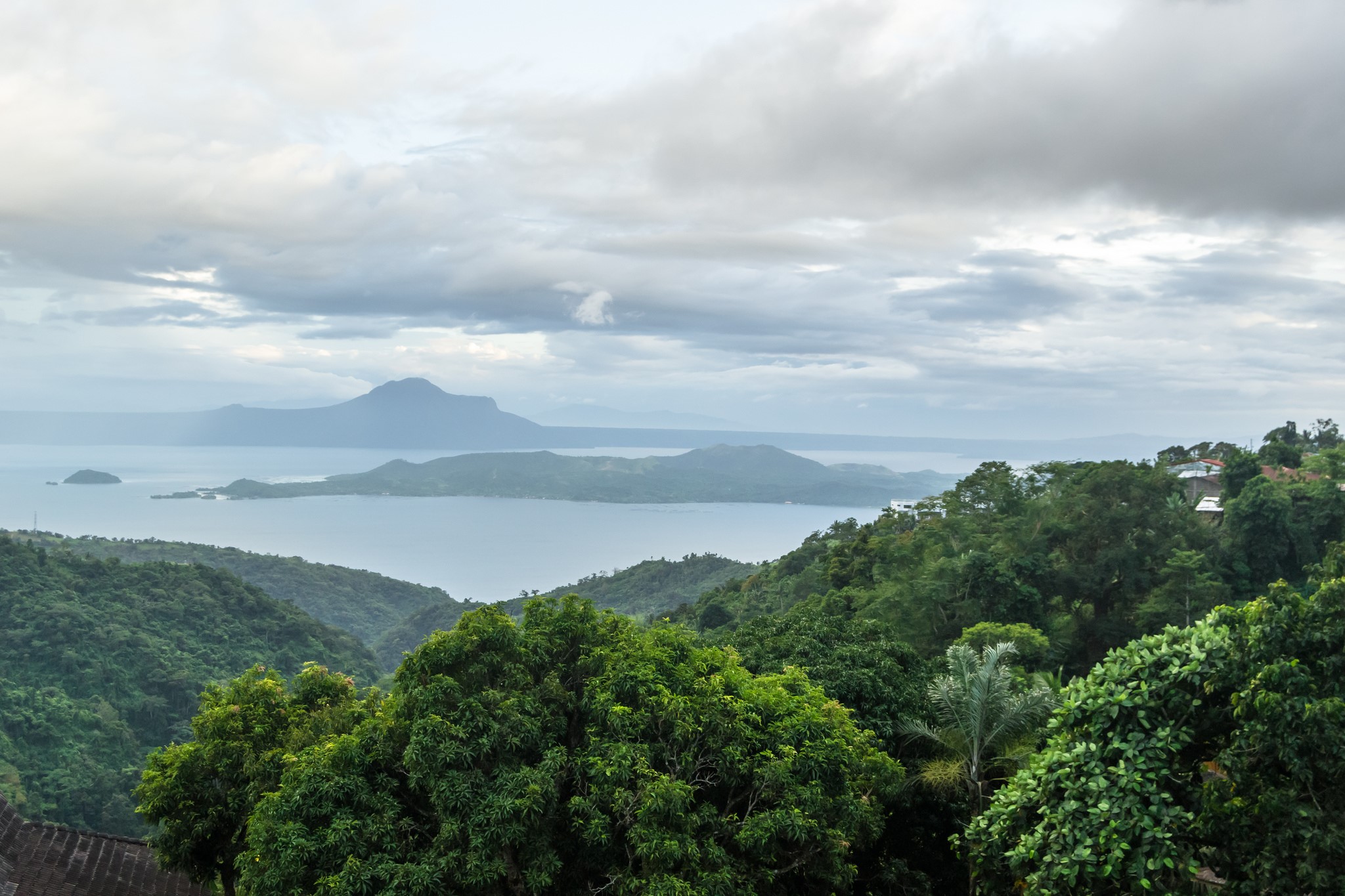
Understanding the Role of Forests in Supporting Livelihoods and Climate Resilience (and Twin Goals) in the Philippines
CHALLENGE
Tremendous progress has been made in reducing poverty over the past three decades. Nonetheless, more than 1 billion people worldwide still live in destitution. In addition, rising prosperity in many countries is accompanied by social exclusion and increasing inequality. The post-2015 Development Agenda has thus made reducing poverty its priority. The new World Bank strategy reinforces this objective, aiming to end extreme poverty in a generation and to promote shared prosperity for the bottom 40 percent. These goals will only be achieved if development is managed in an environmentally, socially, and fiscally sustainable manner.
The challenge for development is that the poor are often highly dependent on natural resources, such as forests. Although forests provide ecosystem services and safety nets for the livelihoods of the poor, forests are facing significant pressures from the range of sectors that are critical for economic growth, such as agriculture, transport and energy. Therefore, if sustainably managed, forests could play a significant role in achieving the twin goals of reducing poverty and building climate resilience. However, our understanding of this dual forest-poverty relationship is limited, which this study seeks to address..
APPROACH
This study focuses on the Philippines where, similar to many tropical countries, extensive deforestation and forest degradation have taken place over the last century due to logging, fires and other human disturbances, which are further aggravated by climate change. The country’s total forest cover has declined to merely 6.9 million hectares, or 23% of the total land area.
This study builds on the three primary roles that environmental income plays in supporting rural livelihoods: (i) supporting current consumption; (ii) providing safety nets to smooth income shocks or offset seasonal shortfalls, as well as impacts of climate change; and (iii) providing the opportunity to accumulate assets and exit poverty. Each of these roles is examined further in how they depend on and impact the ecosystem services provided by forests (including the impacts of climate change), and how they can help reduce extreme poverty and promote shared prosperity for the bottom 40%. Three case study sites were examined: the Upper Marikina RIver Basin Protected Landscape (UMRBPL), the Libmanan-Pulantuna Watershed (LPW), and the Umayam, Minor and Agusan Marsh Sub-basin (UMAM).
RESULTS
- Higher forest cover generates higher water yields during the driest months of the year.
- If the water regulating services provided by forests were to be replaced by delivered water, the expected costs would be USD 419-1,064 per household per year, depending on the study site. These costs will be prohibitive to most households in the study sites as the majority subsist below the poverty line.
- Compared to a “no forest” scenario, forest reduce the volume of floodwater by 27% to 47% during the three wettest months of the year. Forests on steep slopes (>30%) help mitigate the risk of erosion by 68% to 99% per hectare, and have the potential to reduce annual sediment outflows from watersheds by 7 to 100 times compared to bare soil.
- Replacing erosion and sediment control services with manmade control measures will cost billions of pesos. Reforestation is a lower-cost alternative to securing erosion regulation ecosystem services over the medium term.
- Water was cited by poor upland communities as the most important subsistence benefit from the forest, which they use for domestic purposes and, in some instances, for irrigation.
- Upland communities in UMRBPL reported that about 7% of their annual cash income comes from the sale of forest resources like bamboo products, charcoal, fish, and bush meat. Approximately 40% of their annual income comes from the sale of farm produce grown on forested land.
- Forests also provide fuelwood and wood for charcoal, which supplies most of the communities’ energy needs.
- Poorer households in upland communities rely more on forest resources for income and subsistence
The study concludes with a list of recommendations for landscape planning and forest management:
- Incorporate ecosystem service modeling and valuation, forest use analysis and scenarios in forest land use planning and forest management.
- Improve access of upland and forest dwelling communities to forest resources.
- Enhance the value of forest assets by internalizing non-market values and adding value to the existing sources of income.
For stories and updates on related activities, follow us on twitter and facebook , or subscribe to our mailing list for regular updates.
Last Updated : 06-16-2024








